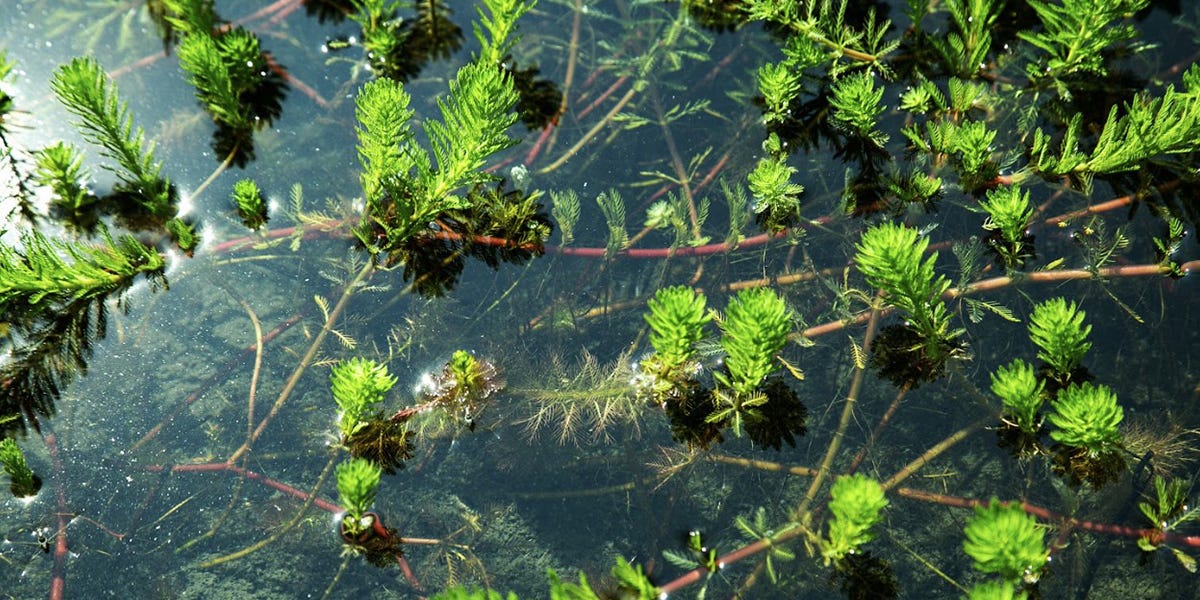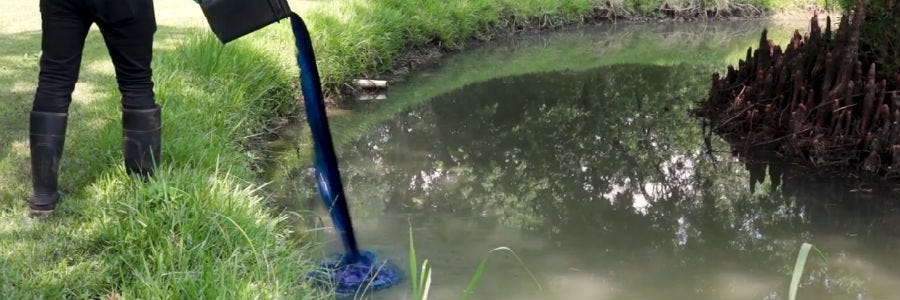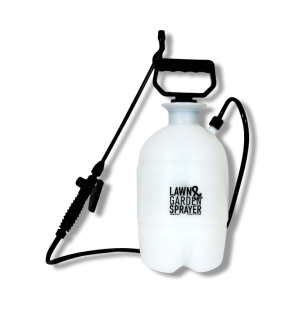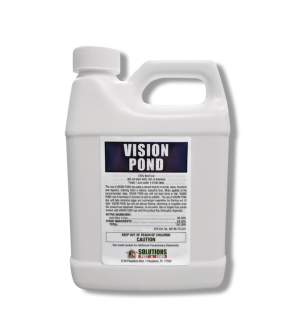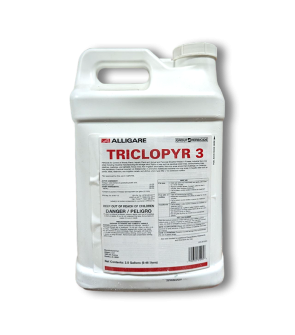Gain access to personalized product screening, the best pricing, rewards, and more!
Most Effective Products
Water Milfoil Control: How To Get Rid of Water Milfoil
Water milfoil is an invasive aquatic weed that tends to be aggressive wherever established. Also known as Eurasian water milfoil, the plant is a submerged aquatic weed from Europe, Asia, and Northern Africa. Some of the key characteristics of this weed are its soft, feather-like leaves and whorl arrangement.
Aside from being annoying to deal with, water milfoil provides no nutritional value to wildlife or fish underwater. This works in the plants' favor because they will grow without anything eating the water milfoil.
Water milfoil is spread by floating pieces that re-root and special reproductive buds that break off the plant and are dispersed by water currents and birds. If left unchallenged, water milfoil can quickly overtake the water, make for a very ugly sight, and hinder activities like fishing, swimming, and water skiing.
If you encounter water milfoils in your water, our helpful guide below has all the steps and tools needed to remove them quickly and affordably.
Identification

Before proceeding with a treatment program, you must be certain you are dealing with a water milfoil infestation. Careless identification can lead to using the wrong treatment methods, which can waste time and money. Below are the following characteristics to help you understand what a water milfoil looks like.
- Water milfoil has a distinctive appearance, with its leaves whorled in groups of 4. Each leaf is divided into many thread-like leaflets extending from a central rib. When on the surface of the water, Water Milfoil forms tangled patches. Seed heads form in the mid-to-late season and may extend above the water surface.
This description and image will help you identify whether water milfoil is growing in your pond. Contact us if you need help identifying the plant, and we will try to assist you.
Inspection

Walk around your lake or pond to observe the water milfoil and see how big of an infestation there is. It is important to know how much chemical product you will need to treat the weed. An inspection should also help you determine the best and safest control plan. You would not want to harm any beneficial vegetation, fish, or other aquatic creatures.
Where to Inspect
Water milfoil is an opportunistic species that likes water conditions with excessive sediment and nutrients. It also thrives in waters rich with nitrogen and phosphorous, such as on a farm or agricultural pond, where these nutrients can run off into the water. Water milfoil tends to multiply in large numbers when water temperatures rise.
What to Look For
You should look for water milfoil. It is a submerged plant, but you can see it, especially if there's a big infestation bunched in large mats. Check for feathery leaves attached to a stem that can reach up to 9 feet long.
Treatment
Before carrying out chemical applications, wear the necessary personal protective equipment (PPE), such as gloves, glasses, and a particle mask, for safety.
Our top recommended product to treat water milfoil is 2,4-D Amine Selective Post-Emergent Herbicide. The active ingredient in this product does a great job killing water milfoil and can also control a wide range of other problematic aquatic weeds.
Step 1: Prepare and Mix the 2,4-D Amine Selective Post-Emergent Herbicide

Before mixing and application, you will need to calculate the size of the water body you wish to treat to determine how much 2,4-D Amine Selective Post-Emergent Herbicide you will need.
For water bodies, the measurement is usually done by calculating the acreage or acre-foot. To do this, measure the length, width, and average depth of the water body in feet, then divide by 43,560 (Length (ft.) x Width (ft.) x Average Depth (ft.) / 43,560 = Acre-feet).
According to the label, 2,4-D Amine Selective Post-Emergent Herbicide should be applied at 2.84 gallons of product per acre foot.
Step 2: Apply 2,4-D Amine Selective Post-Emergent Herbicide to target Pond Weeds
Once the 2,4-D Amine Selective Post-Emergent Herbicide is well-mixed, depending on the targeted weed and the water's depth, you can spray the herbicide over the water along the shoreline, spot-treat emerged weeds, or broadcast spray over the water's surface. Use a fan spray nozzle to ensure an even coating on the water surface.
Step 3: Follow Up Applications
Depending on the size of your pond or lake, you may need to conduct treatment in sections, waiting two weeks between treatments until you have treated the entire body of water. Reapplication may be necessary 21 days after the initial application is complete. Water Milfoil can be a stubborn weed to remove, so monitoring your water is key, and repeated application is crucial to getting complete control.
Prevention
Once water milfoil has been eliminated from your property, you must implement preventative measures to ensure this aquatic weed does not return.
- To prevent water milfoil from returning after removal, we recommend applying Vision Pond Dye. Vision Pond Dye stops plant development by blocking sunlight into the water and gives your pond a clean blue color. Measure the appropriate amount of Vision Pond Dye into a bucket based on your pond area measurement findings. The label recommends applying at a rate of 1 quart per 1 surface acre of water at a 5-foot average depth. Pour the pond dye over the edge directly into the body of water, and the water's natural movement will disperse the dye.
Key Takeaways
What is a Water Milfoil?
- A water milfoil is a submerged weed that is very aggressive and known to create large, dense infestations.
How to Get Rid of Water Milfoil
- 2,4-D Amine Selective Post-Emergent Herbicide is our top recommendation for treating water milfoil and successfully removing it from a water property.
Prevent Water Milfoil Reinfestation
- Applying Vision Pond Dye after treatment is a great preventative measure that prevents water milfoil regrowth and can restore the look of your pond, giving it a natural blue color.






